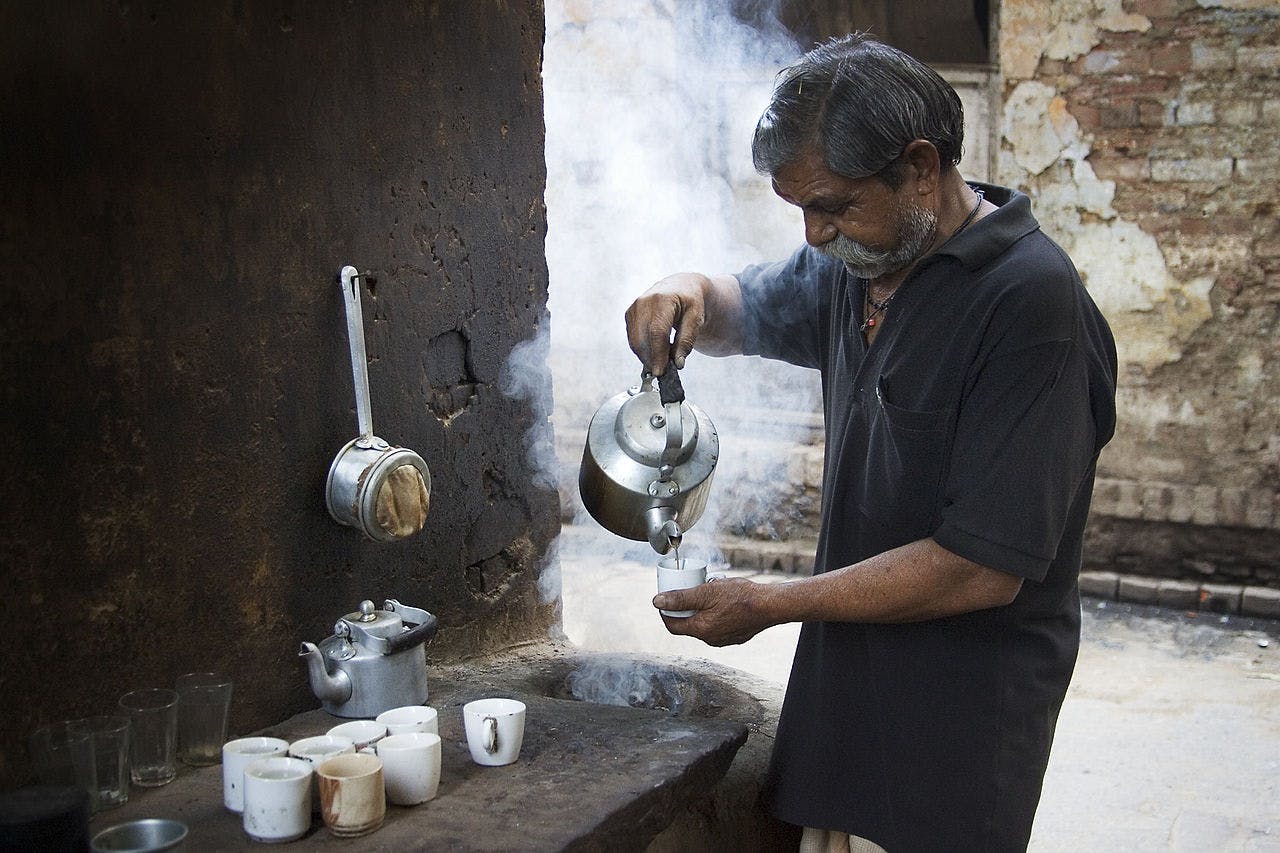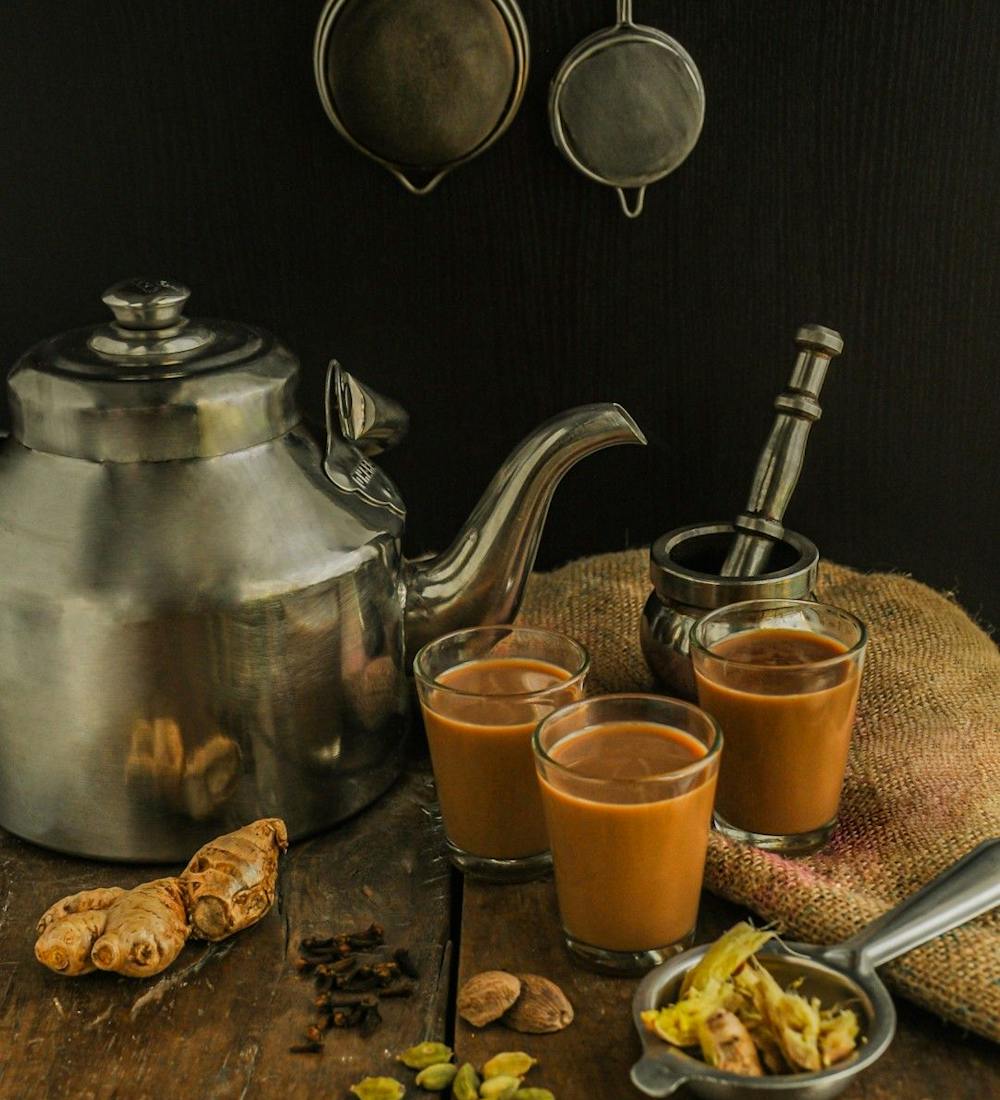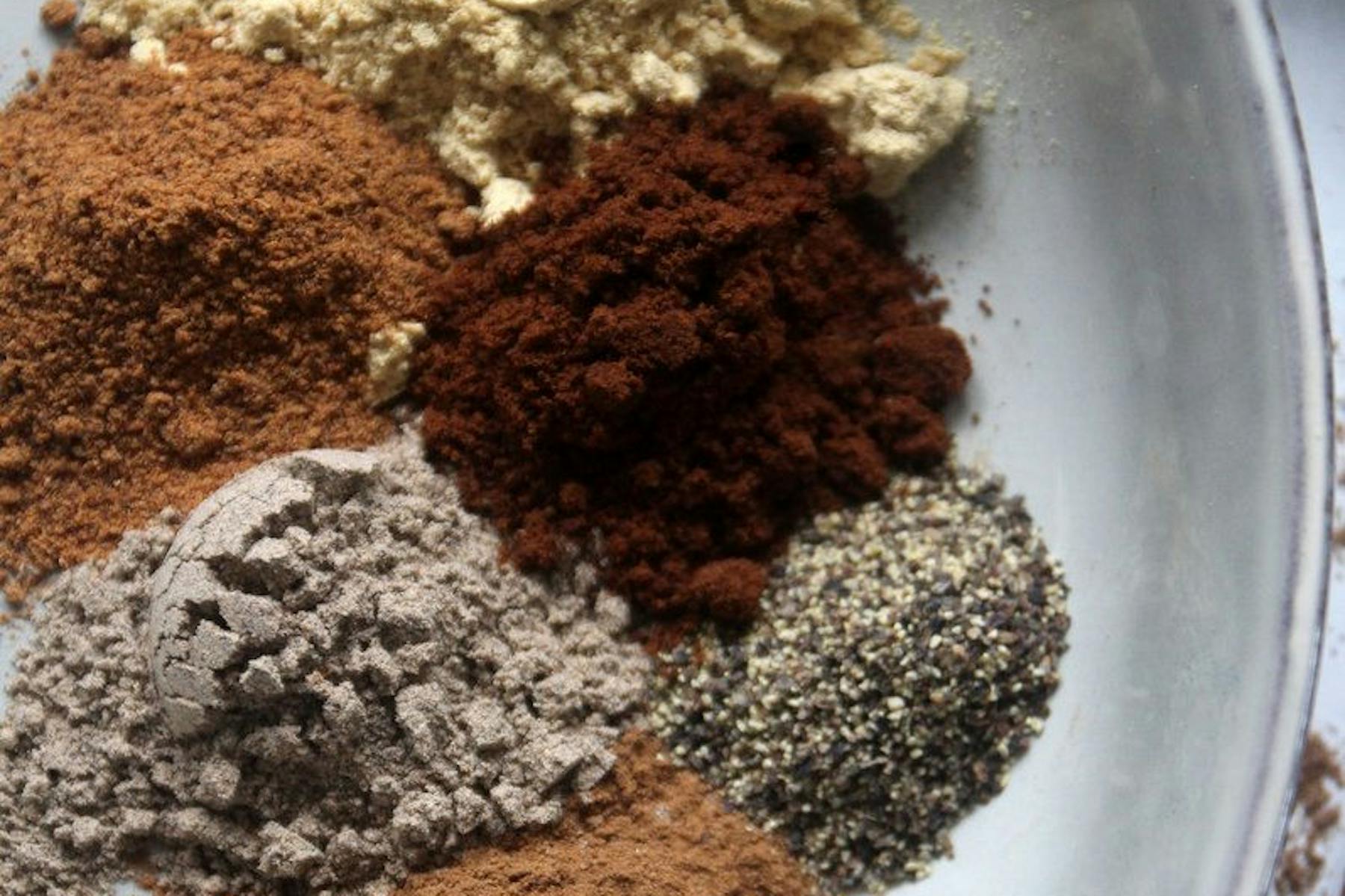We’ll see you in there.
Connect to customize your food & drink discovery.
By signing up you agree to our Terms of Service and Privacy Policy.
It's finally October, and the chill in the morning we now feel is the perfect pairing for a hot and frothy cup of aromatic chai. Chai, or "chai tea latte" as it's redundantly called by legions of North American girls, is a spiced, milky beverage that warms your body and soul.

To provide you with a brief history of chai, around 1835 the British set up tea farms in Assam, India; camellia sinensis, or black tea, had been cultivated by the Chinese for centuries and they had the global monopoly on it. The British, who REALLY liked this tea, actually smuggled (read: stole) it out of China via a Scottish botanist and supplanted it in India, where they could finally, cheaply, fulfill their tea obsession. For Indians, however, that black tea was still incredibly expensive despite it being grown on their own land, so vendors brought the cost down in the early twentieth century by combining tea with milk and sugar (in a similar vein to how the British drank it) but boiled with their local spices. By the 1960s, with mechanical changes to tea harvesting, black tea was more affordable than ever, and chai became a staple in Indian households because who wants a plain cup of tea when you can literally add a little spice.
According to ancient chai lore, however, the potential origin of the beverage could be as much as 5,000-9,000 years ago when a king in India (when India was made of up various kingdoms) invented the stage 1 concept of chai (boiling the spices) as Ayurvedic healing medicine, no milk or sugar or tea were added.

Chai is traditionally prepared on a stovetop; spices can vary, but commonly include green cardamom, cinnamon sticks, star anise or fennel seeds, whole black peppercorns, ginger, cloves, coriander seeds, etc. the spice combinations are endless! The technique differs from person to person as well; some will boil their spice blend in water, then add milk and simmer for a bit before steeping with tea, and some will boil their milk and water at the same time, saving the steeping for the end, and sugar is usually mixed in as the last step. Please don't quote me on this because this isn't how your Nani makes the best chai ever; the beauty of chai is how everyone can make their own perfect cup.

The amount of customization with chai has no limit, some people (like my mom) add 2 tablespoons of sugar, which is guaranteed to give you a sugar buzz, others triple the cardamom they use, to make sure that it's the most poignant spice profile in their cup. This is also why ordering chai at cafes can often be a hit or miss; sometimes (as I've found) my chai latte really just tastes like a cup of steamed almond milk with a faint hint of cinnamon. If you ask any Indian or Pakistani person, they'll say the best chai in Toronto is actually at their mom's house in Brampton. They're probably right, because the laborious process of cooking two cups of chai on a stovetop is hard to mimic in our quick-serve café culture which relies on chai syrups, blends, and bags.
However, some places in Toronto really do serve a mean cup of chai/chai lattes, and the following are vetted (loosely, by me), to make sure you're not just getting a cup of hot beige milk.
Harbord Village
201 Harbord St
Bampot Bohemian House of Tea
Coffee & Tea

An excellent cup of chai, they make an in-house concentrate (the owner, Alex, learned the craft straight from Assam, India), and he's currently working on a Kashmiri chai, which uses gunpowder tea and has a stunning pink colour (and otherwise very difficult to find in Toronto). The atmosphere is also incredibly cozy and welcoming, with South Asian inspiration in the décor.

Bampot Bohemian House of Tea
Harbord Village
201 Harbord St
An excellent cup of chai, they make an in-house concentrate (the owner, Alex, learned the craft straight from Assam, India), and he's currently working on a Kashmiri chai, which uses gunpowder tea and has a stunning pink colour (and otherwise very difficult to find in Toronto). The atmosphere is also incredibly cozy and welcoming, with South Asian inspiration in the décor.
Coffee & Tea
Caked Coffee

Caked Coffee, a recently opened family-owned vegan bakery and café does their chai latte right. The spices are steeped and they manage to give their chai that thick, creamy texture using alternative milks that can be difficult to achieve.

Caked Coffee
Caked Coffee, a recently opened family-owned vegan bakery and café does their chai latte right. The spices are steeped and they manage to give their chai that thick, creamy texture using alternative milks that can be difficult to achieve.
Little Sister Baking

Make sure to check their Instagram before heading out to try their perfectly creamy chai lattes (just in case it's not on the menu for that week). In the summer they have the stunning iced chai latte pictured for your hot girl summer walk, and in the colder months they have a hot chai instead. We love a seasonal rotation like that.

Little Sister Baking
Make sure to check their Instagram before heading out to try their perfectly creamy chai lattes (just in case it's not on the menu for that week). In the summer they have the stunning iced chai latte pictured for your hot girl summer walk, and in the colder months they have a hot chai instead. We love a seasonal rotation like that.
Little Italy
400 College St
Thindi Cafe
Indian

They make it hot and they make it strong; Thindi has ginger, masala, and cardamom chai options, and they also do it iced! Chai in India is often held with a savoury instead of sweet snack, so you won't be hard pressed for options to pair with your drink like their Chilli Cheese Toast or Cheesy Maggi.

Thindi Cafe
Little Italy
400 College St
They make it hot and they make it strong; Thindi has ginger, masala, and cardamom chai options, and they also do it iced! Chai in India is often held with a savoury instead of sweet snack, so you won't be hard pressed for options to pair with your drink like their Chilli Cheese Toast or Cheesy Maggi.
Indian
Chachi's Chai Bar

Yes, this will be an absolute voyage out of the city, but your pilgrimage to Chachi's Chai Bar will be worth it when you're clutching a steaming cup of masala chai. Although with other drinks South Asian inspired drinks on their list like the Mansoon Latte (lavender and honey, espresso, milk topped with pink Himalayan salt) or the Kesari Taj Refresher (mango, cardamom, coconut milk and a splash of soda), will make it hard to settle on just one drink.

Chachi's Chai Bar
Yes, this will be an absolute voyage out of the city, but your pilgrimage to Chachi's Chai Bar will be worth it when you're clutching a steaming cup of masala chai. Although with other drinks South Asian inspired drinks on their list like the Mansoon Latte (lavender and honey, espresso, milk topped with pink Himalayan salt) or the Kesari Taj Refresher (mango, cardamom, coconut milk and a splash of soda), will make it hard to settle on just one drink.
Little Italy
426 College St
Manic Coffee

Disclaimer: they do use a pre-made blend, but their ratios are perfect and they serve it frothy and piping hot. It's hard to be a purist in this city when it comes to chai, and Manic does a really tasty, accessible version.

Manic Coffee
Little Italy
426 College St
Disclaimer: they do use a pre-made blend, but their ratios are perfect and they serve it frothy and piping hot. It's hard to be a purist in this city when it comes to chai, and Manic does a really tasty, accessible version.
Chaiiwala London

Chaiiwala is a London-based Indian tea and snack chain, and they have several chai flavours on draught, the especially creamy Pink Chaii is a favourite. Vegans and the lactose-intolerant won't be so lucky, although they handmake by the cup their Karak Chaii to cater to the dairy-free (and it's deliciously flavourful although really strong).

Chaiiwala London
Chaiiwala is a London-based Indian tea and snack chain, and they have several chai flavours on draught, the especially creamy Pink Chaii is a favourite. Vegans and the lactose-intolerant won't be so lucky, although they handmake by the cup their Karak Chaii to cater to the dairy-free (and it's deliciously flavourful although really strong).
Madras Kaapi

The Indian coffee house that opened earlier this year specializes in kaapi, traditional Indian chicory coffee, but they should also be known for their wildly good chai. They make their own concentrate the night before by boiling their masala blend with freshly chopped ginger. When ready to serve, they steam it with your choice of milk using traditional Indian chai portions in a little clay cup. It's hard not to buy multiple rounds (which I have done too many times).

Madras Kaapi
The Indian coffee house that opened earlier this year specializes in kaapi, traditional Indian chicory coffee, but they should also be known for their wildly good chai. They make their own concentrate the night before by boiling their masala blend with freshly chopped ginger. When ready to serve, they steam it with your choice of milk using traditional Indian chai portions in a little clay cup. It's hard not to buy multiple rounds (which I have done too many times).
Simit and Chai Co.

Chai is in the name here, so you expect it to be good (and at one point it consistently was, you would steep the spices directly into your cup) but now they rely on a concentrate that, although they make it in-house with the right spices, really varies batch to batch. It also varies too much between baristas, some use more concentrate, some give you cups of lukewarm milk. My advice when ordering here or at their sister store Pasaj, request a strong cup and get it extra hot, usually then it's decently good. Also know that despite chai being a beverage prepared with milk, you have to pay ¢50 to make it into a "chai latte."

Simit and Chai Co.
Chai is in the name here, so you expect it to be good (and at one point it consistently was, you would steep the spices directly into your cup) but now they rely on a concentrate that, although they make it in-house with the right spices, really varies batch to batch. It also varies too much between baristas, some use more concentrate, some give you cups of lukewarm milk. My advice when ordering here or at their sister store Pasaj, request a strong cup and get it extra hot, usually then it's decently good. Also know that despite chai being a beverage prepared with milk, you have to pay ¢50 to make it into a "chai latte."
Mos Mos

I know, a downtown Toronto coffee chain? What? But honestly their chai selection is amazing; they get their blends right from Mumbai, and the flavours are bold, strong, and always served consistently piping hot (unlike many rushed and lukewarm disasters I've consumed, nobody wants room-temperature chai). Mos Mos' Masala Chai is my personal favourite, but they also feature a cardamom chai, mango chai, taro chai, etc.

Mos Mos
I know, a downtown Toronto coffee chain? What? But honestly their chai selection is amazing; they get their blends right from Mumbai, and the flavours are bold, strong, and always served consistently piping hot (unlike many rushed and lukewarm disasters I've consumed, nobody wants room-temperature chai). Mos Mos' Masala Chai is my personal favourite, but they also feature a cardamom chai, mango chai, taro chai, etc.